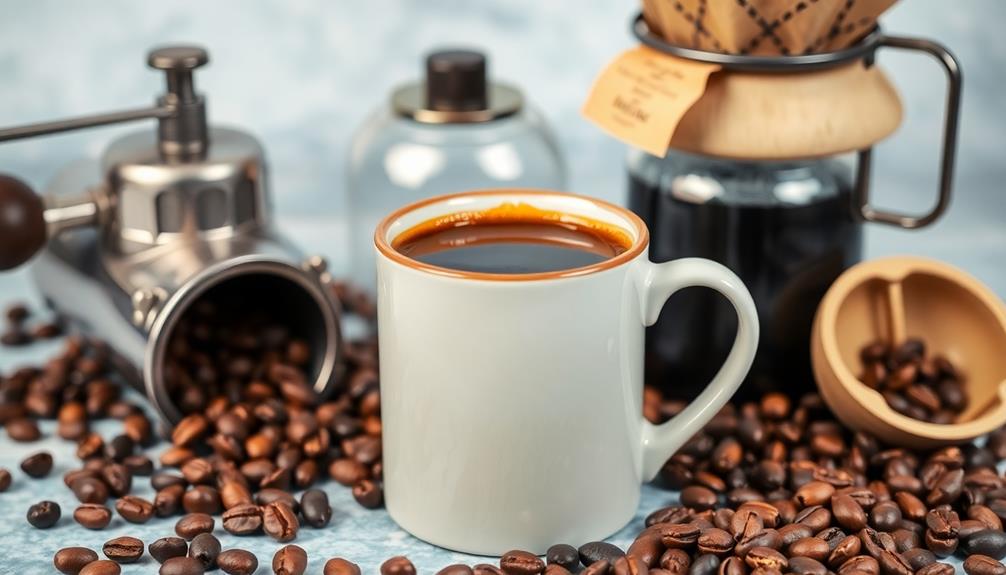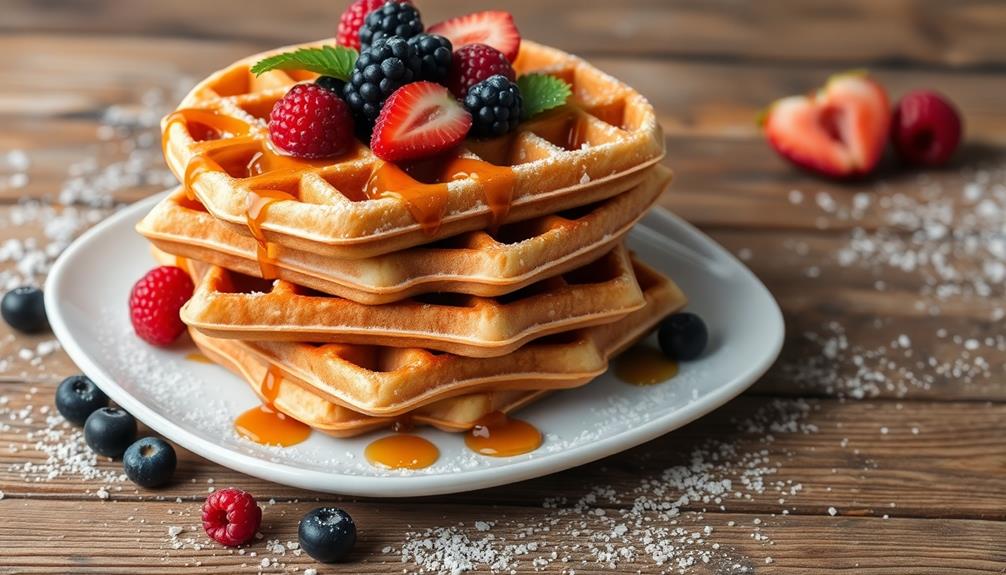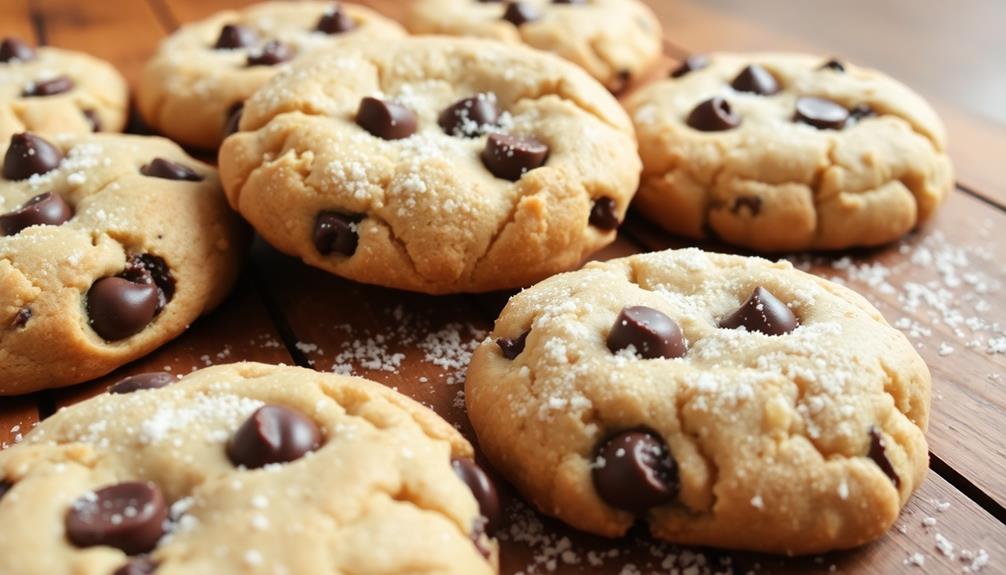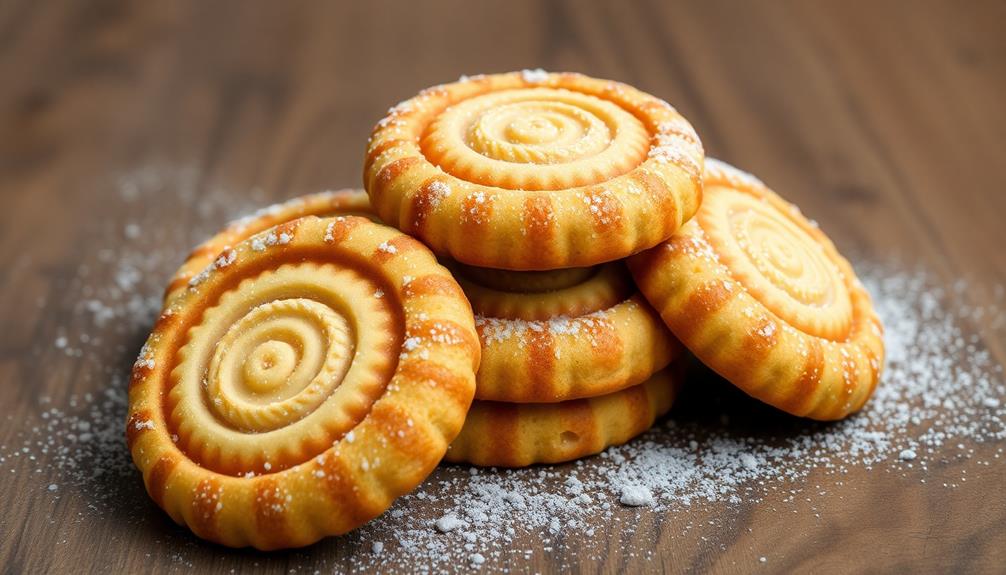As a beginner, you'll want to start by choosing high-quality, freshly roasted coffee beans and grinding them just before brewing for maximum flavor. Use a ratio of about 2 tablespoons of grounds per 6 ounces of filtered water, heated to the ideal temperature range of 195°F to 205°F. Experiment with different brewing methods, like pour-over or French press, and adjust the grind size and steeping time to find your perfect cup. Don't forget to savor the aroma and taste – the art of coffee-making can be a truly rewarding ritual. Keep exploring, and you'll be a coffee connoisseur in no time.
Key Takeaways
- Start with high-quality, freshly roasted whole bean coffee for optimal flavor.
- Measure the coffee-to-water ratio accurately, typically 2 tablespoons of grounds per 6 ounces of water.
- Grind the beans just before brewing to ensure maximum freshness and aroma.
- Heat the water to the ideal temperature range of 195°F to 205°F for optimal extraction.
- Experiment with different brewing methods, such as drip, French press, or pour-over, to find your preferred flavor profile.
History
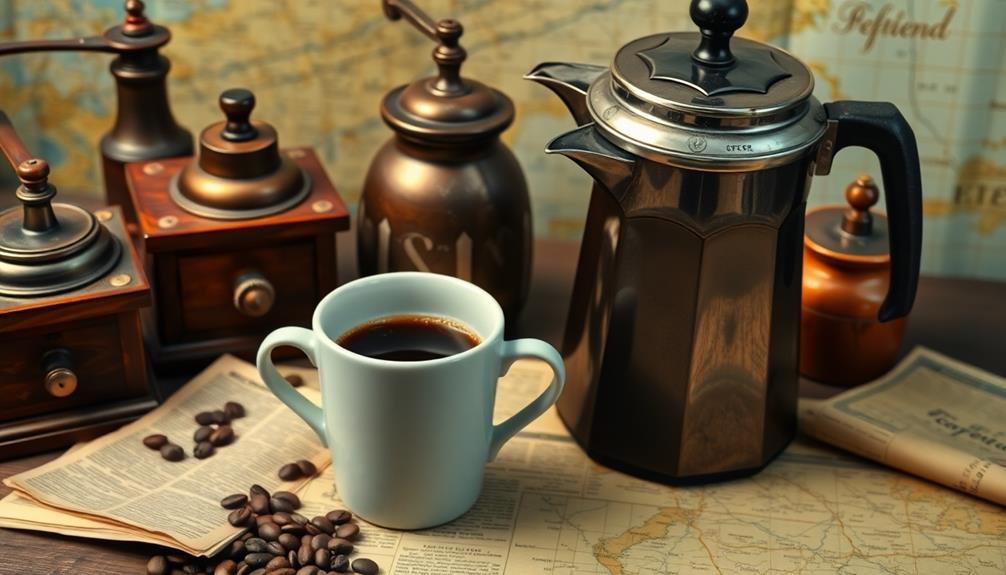
Coffee's history dates back centuries, with its origins tracing to the African nation of Ethiopia.
Legend has it that a goatherd named Kaldi noticed his goats becoming unusually energetic after eating the berries from a certain bush. Intrigued, Kaldi tried the berries himself and experienced a similar boost in energy and alertness.
The news of this "magical" plant spread, and soon, monks in the region began using the beans to create a hot beverage. From there, the popularity of coffee grew, eventually making its way to the Arabian Peninsula and the rest of the world.
By the 16th century, coffee houses had become hubs of social and intellectual activity across Europe.
Today, coffee remains one of the most widely consumed beverages globally, with an estimated 2.25 billion cups enjoyed every day.
Its rich history and diverse cultural traditions have contributed to the beverage's enduring popularity and cultural significance.
Recipe
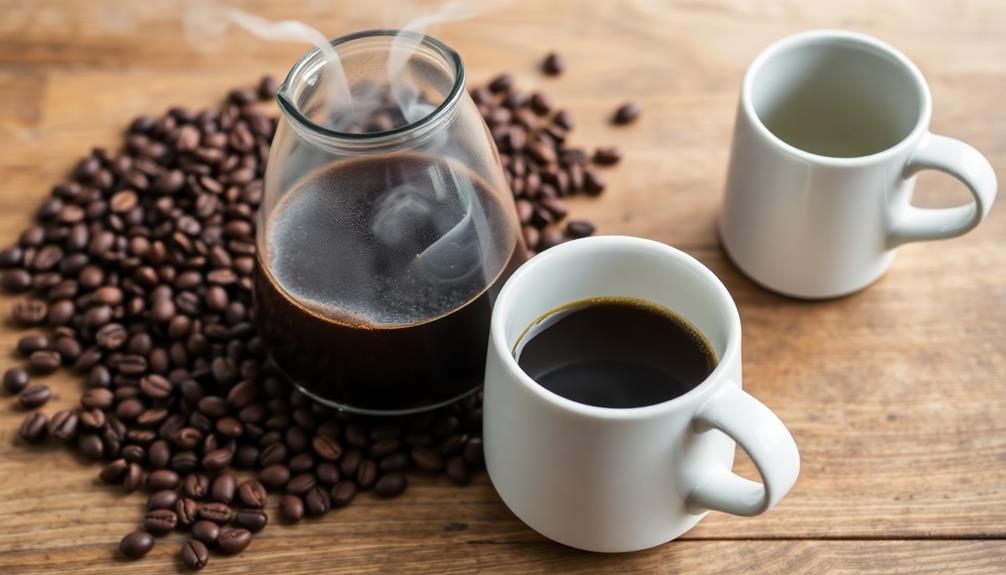
Making the perfect cup of coffee is an art that can be perfected with a few simple tips. The key to a delicious brew lies in the quality of the beans, the grind, and the brewing method. Understanding different brewing methods can help you elevate your coffee experience.
Whether you prefer a bold, full-bodied roast or a light, nuanced blend, the right technique can transform your morning ritual into a truly satisfying experience.
Preparing a cup of coffee is more than just a routine task; it's a chance to savor the aroma, texture, and flavor of this beloved beverage. By understanding the nuances of coffee-making, you can unlock a whole new world of taste and enjoyment.
- High-quality whole bean coffee
- Burr grinder (if possible)
- Filtered water
- Coffee maker or brewing device
- Measuring spoon
- Timer
Begin by grinding the coffee beans to the desired coarseness, ensuring a uniform grind for even extraction. Use a ratio of approximately 2 tablespoons of ground coffee per 6 ounces of water.
Heat the filtered water to the optimal temperature, around 195°F to 205°F, and pour it over the coffee grounds. Brew the coffee using your preferred method, whether it's a drip machine, French press, or pour-over. Adjust the brewing time to suit your taste, typically around 4 to 6 minutes.
Lastly, remember that the perfect cup of coffee is a matter of personal preference. Experiment with different beans, roasts, and brewing techniques to find your ideal flavor profile. Enjoy your freshly brewed coffee and savor the art of coffee-making. Don’t be afraid to adjust variables like grind size, water temperature, or brew time to fine-tune your flavor. Over time, you’ll develop your own perfect coffee recipe that captures exactly what you love about a great cup. The journey to discovering it is all part of the experience, so embrace the process and enjoy every sip.
Cooking Steps
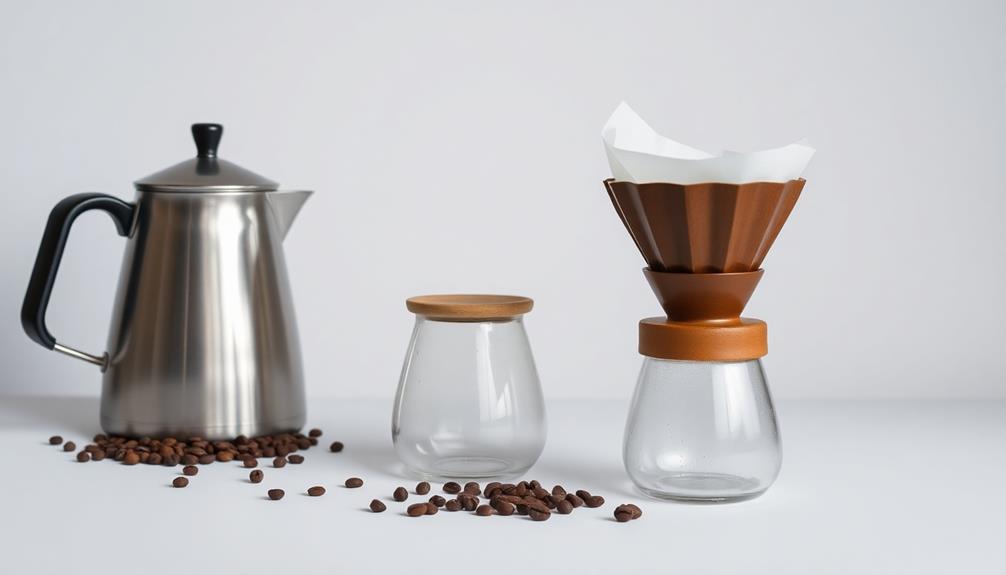
Grind your coffee beans to the right coarseness for the brewing method you're using.
Heat the water to the optimal temperature, typically between 195-205°F, to extract the best flavors.
Add the ground coffee and let it steep for the desired extraction time before pouring the rich, flavorful coffee into your cup.
Step 1. Grind Coffee Beans Appropriately

Proper coffee bean grinding is crucial to extracting the full flavor potential of your brew. The size of the grind can dramatically impact the taste, aroma, and body of your coffee.
As a general rule, a finer grind is best for espresso and a coarser grind works better for methods like French press or pour-over.
When grinding your beans, start with a medium grind and adjust from there based on your personal preferences and brewing technique. Use a burr grinder if possible, as it provides a more consistent particle size compared to blade grinders.
Experiment with different grind settings to find the perfect texture – you're aiming for something resembling granulated sugar.
Remember to grind your beans immediately before brewing for maximum freshness. Buying whole beans and grinding them yourself is the best way to ensure a flavorful cup of coffee. For even more flavor, consider experimenting with different grind sizes depending on your brewing method, as this can greatly influence the taste and aroma of your coffee. While you’re perfecting your coffee routine, you might also enjoy exploring new recipes in the kitchen, such as an easy refried beans recipe to pair with a hearty breakfast. Taking the time to craft each element of your morning can elevate the start of your day to something truly special.
With a little practice, you'll be grinding like a pro in no time!
Step 2. Heat Water to Optimal Temperature
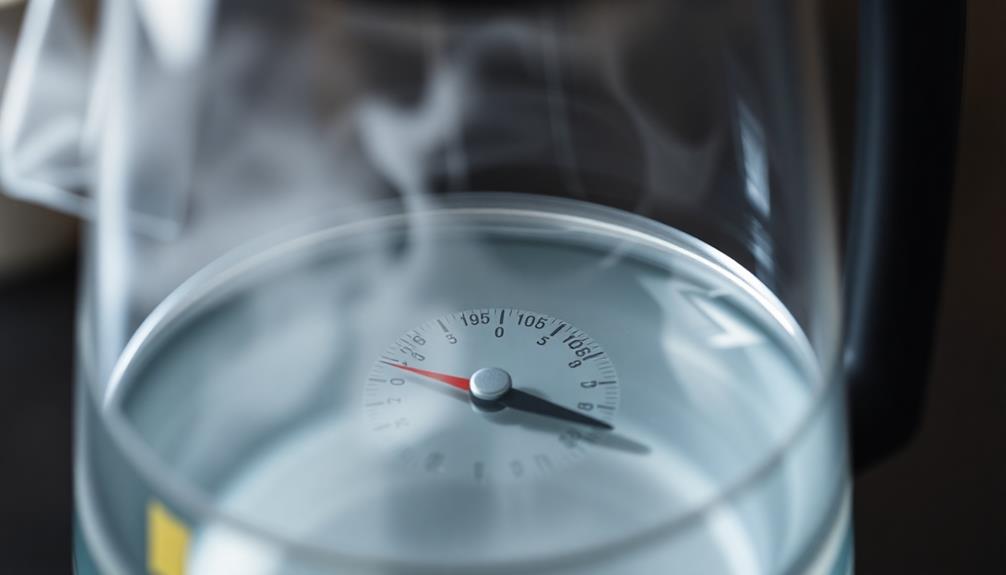
Once you've perfected the grind, the next step in brewing great coffee is heating the water to the optimal temperature.
The ideal water temperature for brewing coffee falls between 195°F and 205°F (91°C and 96°C). This range allows the water to extract the coffee's full flavor profile without burning the grounds.
To achieve the perfect temperature, you'll want to use a kettle or saucepan and bring the water to a gentle boil. Avoid letting the water reach a rolling boil, as this can lead to a flat, bitter taste.
Once the water reaches the desired temperature, immediately remove it from the heat source.
If you're using an electric kettle, many models will automatically shut off once the water reaches a boil. This takes the guesswork out of monitoring the temperature.
Alternatively, you can use a thermometer to ensure the water is within the optimal range before pouring it over your freshly ground coffee.
Step 3. Add Coffee Grounds
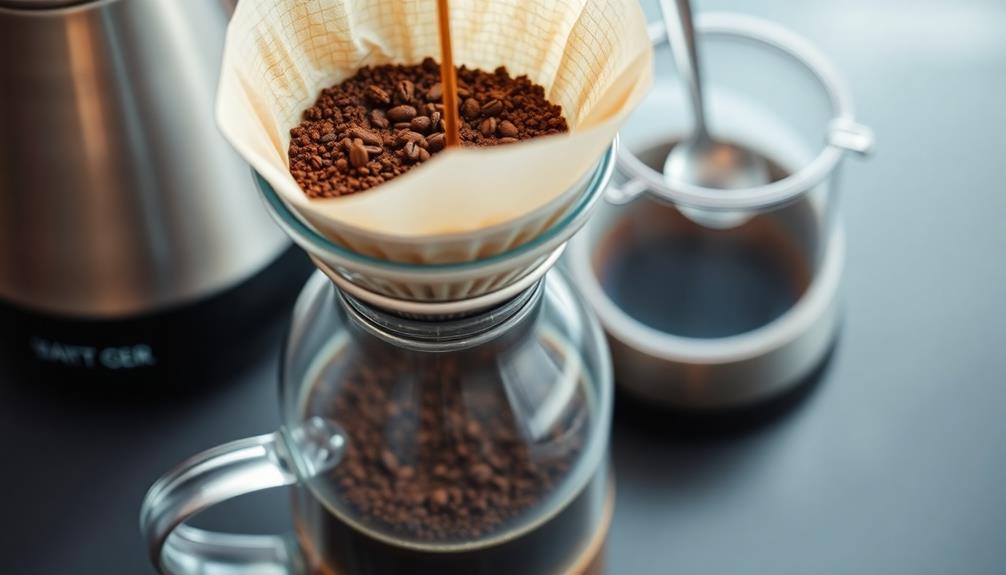
With the water at the optimal temperature, it's time to add the freshly ground coffee. For best results, use a ratio of about 2 tablespoons of coffee grounds per 6 ounces of water. This ratio can be adjusted to suit your personal taste preferences, but it's a great starting point.
Not only does coffee provide a delicious flavor, but it also contains antioxidants that can combat oxidative stress, contributing to overall health coffee's health benefits.
When adding the coffee grounds, make sure to distribute them evenly throughout the filter or brewing device. This ensures even extraction and a balanced flavor profile. Avoid packing the grounds too tightly, as this can lead to over-extraction and bitterness.
If you're using a French press, gently pour the coffee grounds into the carafe, then slowly pour the hot water over the top, making sure to saturate all the grounds.
For drip brewers, simply pour the grounds into the filter basket and let the machine do its magic.
Step 4. Steep for Desired Extraction Time

After adding the coffee grounds, it's time to let the brewing process begin. The steeping time is crucial for achieving the desired flavor and strength of your coffee. As a general guideline, aim to steep your coffee for around 4-6 minutes. This timeframe allows the hot water to extract the optimal amount of oils, sugars, and caffeine from the grounds.
When steeping, be mindful of the water temperature. Aim for water that's between 195°F and 205°F (91°C to 96°C) for best results. Temperatures outside this range can result in over- or under-extraction, compromising the taste.
Once the timer hits 4-6 minutes, it's time to separate the grounds from the liquid. This can be done by:
- Pouring the coffee through a filter
- Pressing a French press plunger down
- Removing a pour-over dripper
Proper steeping ensures your coffee is rich, balanced, and full of flavor. Experiment with timing to find the sweet spot that suits your personal preferences.
Step 5. Pour Coffee Into Cup

The coffee-pouring process is the final step in your brewing journey. Once your coffee has steeped for the desired extraction time, it's time to pour it into your cup. This step requires a gentle, controlled pour to ensure an even distribution of the coffee.
Start by positioning your coffee cup or mug directly underneath the brewer's spout. Slowly and steadily, begin pouring the coffee, taking care not to splash or spill.
As the cup fills, maintain a consistent pouring speed, keeping the stream of coffee centered in the middle of the cup. Consider using a spoon to help guide the flow and prevent drips.
Pay attention to the level of the coffee and stop pouring when it reaches your desired amount. For a full-bodied cup, fill the cup about three-quarters full, leaving room for any desired additions like milk or sugar.
Once the cup is filled, enjoy your freshly brewed coffee!
Final Thoughts
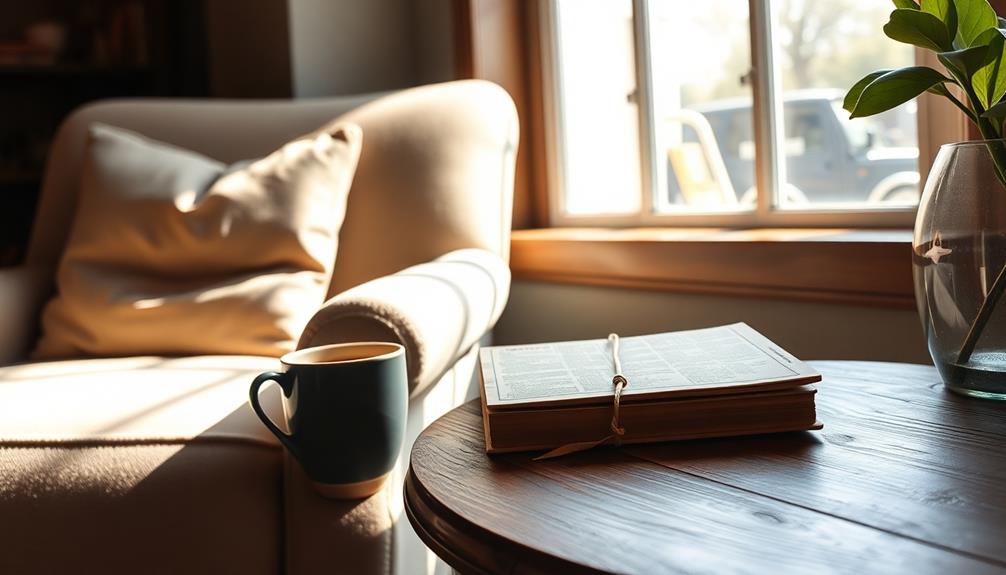
Brewing a consistently delightful cup of coffee, though hardly rocket science, requires a mindful approach. As you've explored the crucial steps, from selecting quality beans to mastering the perfect pour, consider how your coffee choice can influence your overall health and energy levels, especially when compared to other beverages like tea or energy drinks effects of coffee on health.
Remember that the journey is just as rewarding as the final product. Experiment with different roasts, grind sizes, and brewing methods to discover your personal preferences. Don't be afraid to make adjustments until you land on the flavor profile that truly resonates with you.
Beyond the technical aspects, brewing coffee can be a peaceful ritual that nourishes both body and soul. Savor the aroma, the warmth, and the simple pleasure of sipping your creation.
Perhaps even consider sharing this experience with friends or family, fostering connection over a shared love of the bean. Ultimately, the beauty of coffee lies in its ability to enhance your daily routine and provide a moment of tranquility amidst the hustle and bustle of life.
Frequently Asked Questions
How Do I Choose the Right Coffee Beans for My Taste?
When choosing coffee beans, consider your taste preferences. Experiment with different roast levels – light, medium, or dark – to find the one that suits your palate best. Don't be afraid to try new origins and blends to discover your perfect cup.
What's the Best Way to Store Coffee Beans to Keep Them Fresh?
To keep your coffee beans fresh, store them in an airtight container at room temperature, away from direct sunlight, heat, and moisture. This will help preserve the flavor and aroma of your beans.
How Do I Adjust the Grind Size for Different Brewing Methods?
To adjust the grind size, start coarse for French press and slowly move finer for drip, pour-over, and espresso. Experiment to find the perfect grind that extracts the full flavor for your preferred brewing method.
Can I Reuse Coffee Grounds for a Second Brew?
You can reuse coffee grounds for a second brew, but the results won't be as strong or flavorful. The grounds will have already released most of their flavor compounds, so the second brew will be weaker.
How Do I Clean and Maintain My Coffee Equipment Properly?
To clean your coffee equipment, disassemble and wash all removable parts with warm, soapy water. Descale your machine regularly using a specialized cleaning solution. Dry all components thoroughly before reassembling to ensure your coffee stays fresh and flavorful.
